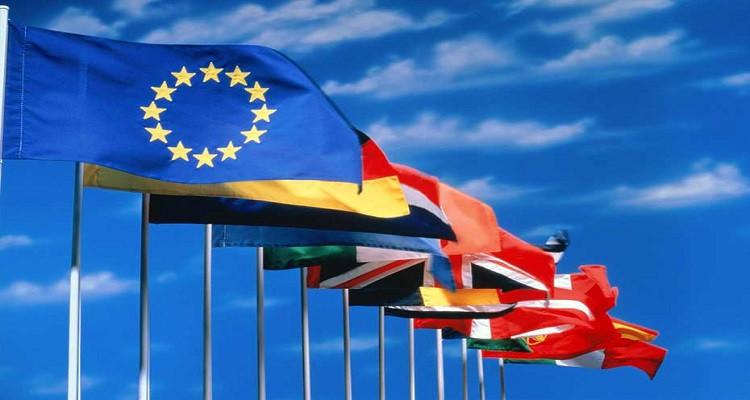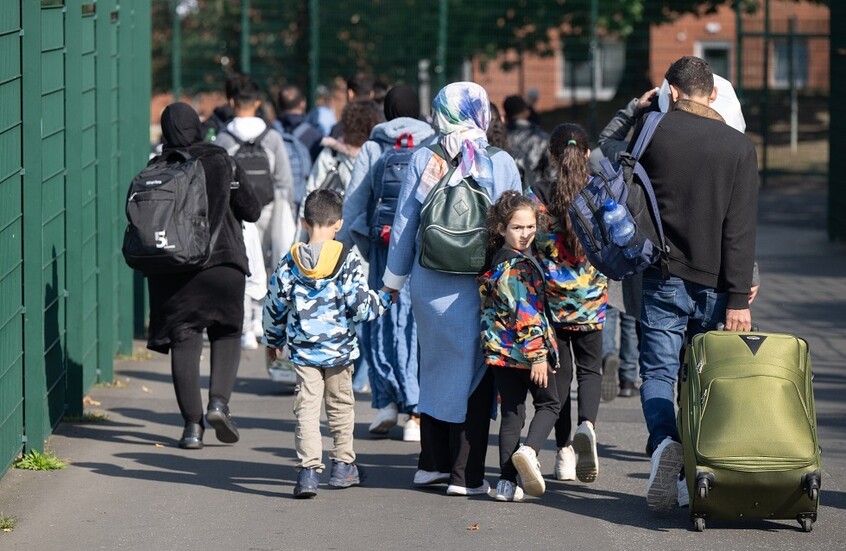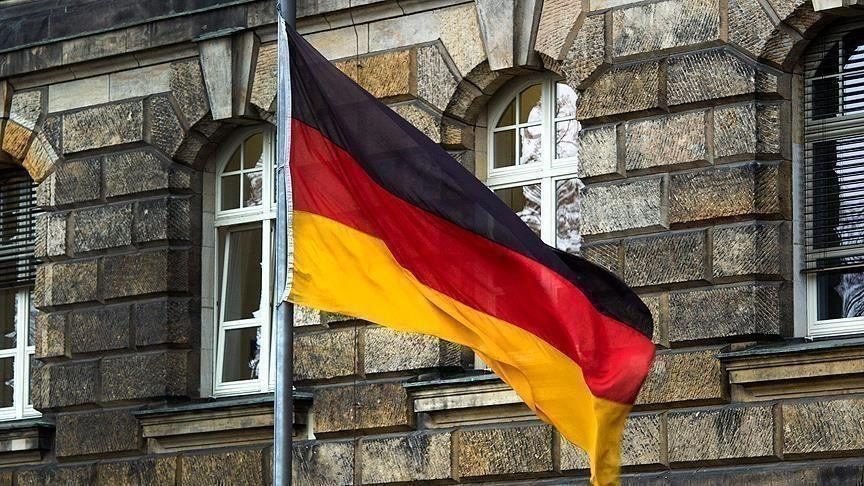
By: Seif Ali
In response to the emergence of far-right parties and their anti-immigrant stance, the right-wing and centrist parties in many European countries have adopted anti-immigration measures in an attempt to snatch victory from the jaws of radicals.
The competition between these political currents that tighten and limit immigration has become in full swing. In addition, racist attitudes and hate crime have become on the rise.
Nonetheless, recent studies show that six European countries—Sweden, Germany, the Netherlands, Norway, Denmark, and Austria—remain welcoming to migrants while upholding their legal rights.
Every year, thousands of citizens around the world are compelled to emigrate from their homelands to seek a safer and more stable life for themselves and their families after staying in their countries has become threatened. They are willing to continue on this path, which sometimes has an uncertain end and carries the challenge of the most severe circumstances, even facing death.
Although there is widespread discourse about the high costs borne by developed countries that receive refugees, an IMF study published in Chapter 4 of the April 2020 World Economic Outlook on the economic impact of migration on recipient countries indicates that migration in general improves economic growth and productivity in those countries.
Migrants in advanced economies raise output and productivity in the short and medium term, the study adds. In particular, it demonstrates that by the fifth year of their migration, output increases by around 1% for every percentage point at which refugees arrive relative to total employment. This is because native and migrant workers offer the labor market a variety of skills that complement each other and lead to higher productivity.
UN Efforts
Through its regional office for Europe in Switzerland’s Geneva and offices in 36 European countries, including 27 EU Member States, and one region, UNHCR is advocating for an end to statelessness in Europe and the world by 2024, in line with the ‘I Belong’ campaign.
Simultaneously, it promotes concerted European action to prevent deaths in the Mediterranean and enhance the infrastructure and processes for receiving asylum seekers. Being the custodian of the 1951 Refugee Convention, UNHCR strives to safeguard the rights and welfare of refugees, asylum seekers, and stateless individuals by offering counsel and assistance to European countries and advocating for the highest international standards in laws and policies.
Numbers of Refugees in Europe
By the end of 2022, 12.4 million refugees were being accommodated in European countries, according to UNHCR figures. This is an increase of almost 5 million from 2021, mostly as a result of the full-scale invasion of Ukraine that started in February 2022 and led to one of the world’s worst crises of forced migration.
Turkey remains the largest refugee-hosting country worldwide, with 3.6 million refugees on its territory by the end of 2022. Germany is the second largest refugee-hosting country in the Europe region, hosting nearly 2.1 million refugees by the end of 2022.
Top European Asylum-Seeking Countries
Asylum seekers always try to file their papers in a European country, so long as this country is safe and economically stable, in order to start a quiet and stable life after the traumatic events that have occurred to them. According to a study released on September 29, 2023, by the website “Arab-de.com,” the best asylum countries in Europe are Sweden, Germany, the Netherlands, Norway, Denmark, and Austria.
However, observers fear that the dominance of populist culture in Europe, along with economic crises, will gradually lead these countries to change their policies towards refugees.
Below is a list of the top six European countries in terms of refugee policies.
First: Sweden
Since the Kingdom of Sweden is one of the best places in Europe to apply for asylum, many Arab migrants are encouraged to submit their applications there.
Sweden annually receives thousands of refugees due to Stockholm’s numerous perks, which allow a refugee to start applying for family reunification 10 to 16 months after obtaining residence. It also provides financial aid before obtaining residence permission as a refugee, ranging from $120 to $250, while the salary of a refugee after obtaining residency is between $900 to $1100. The duration of temporary residence in Sweden is up to 5 years, while the duration of obtaining citizenship does not exceed five years.
There is a sizable Arab community in Sweden, and the government offers Syrian citizens permanent residence based on their country’s conditions, which is an extra perk. Residency is not revoked unless the person presents forged documentation, commits a crime while in the country, or leaves the nation; it is also not contingent on returning to Syria should the situation there improve.
Furthermore, gaining Swedish citizenship is simple and unrelated to employment or language learning; it is awarded to individuals who have been given political asylum in just 4 years and to those who have been granted humanitarian asylum in 5 years.
With regard to reunification in Sweden, the asylum seeker has the right to rejoin with their spouse and any children under the age of eighteen. In some cases, the seeker can reconnect with the mother and father if they are entirely dependent on him, and children of asylum seekers who arrive without their families have the right to be reunited with their parents and siblings under the age of eighteen.
Reunification procedures take from nine months to a year after the refugee obtains a residence permit.
As for studying in Sweden, studying the language is simple, and universities offer tuition-free programs in English because all people speak English.
Asylum card holders are exempt from the requirement to obtain a permit to start work. The completion of a Swedish language course is not mandatory for refugees, and they are free to work while enrolled in classes. This allows them to forego the frequently inadequate social benefits.
Sweden has long been the “power of humanity” and has shone with its open-minded asylum policy, but this country has been undergoing a gradual shift towards restricting immigration over the past years.
This year, in a new announcement of Sweden’s tougher stance on migration, Immigration Minister Maria Malmer Stenergard stated that Sweden will examine ways to increase voluntary migration. The Swedish opposition interprets this announcement as additional proof of the far-right’s sway over the country’s government.
Second: Germany
Germany is superior to its Scandinavian neighbors Sweden and Norway, with its climate and geographical location in the middle of the European Union, which makes it easier to visit any other European country and saves money and time.
Thousands of migrants arrive in Germany each year, and after gaining residence, Berlin allows the refugees to seek reunification for a maximum of three to five months. The asylum wage is between 370 and 390 euros, whereas the financial help given prior to residence is around 300–330 euros. The temporary residency will last for three to one year. For the refugee to become a citizen, they must remain for six to eight years.
The report highlights Germany’s status as one of the top asylum destinations because of the country’s robust economy, which creates work prospects, and because the country continues to provide financial aid to refugees despite the enormous number of migrants it has accepted. Germany, on the other hand, has raised the amount of money it provides to migrants.
It aims to address the dearth of reasonably priced rental homes and flats, with refugees being among the groups that find difficulty finding private housing.
While other countries are trying to restrict immigration, the German parliament passed a law in June to attract skilled migrant workers to the country.
The law allows for the reduction of the volume of routine transactions and impediments for migrant workers from outside the European Union and to adopt a points-based system similar to that in Canada, taking into account age, skills, qualifications, and any association with Germany.
Additionally, it allows for an easing of requirements pertaining to educational attainment, remuneration, and German language proficiency.
This would facilitate immigration to Germany for those who do or do not have a work offer. One of the incentives is that you may bring in your parents as well as your spouse and kids.
Nevertheless, a large segment of society does not appear to support these measures, which address the demands of the economy and close the labor shortage. With a “no” vote, the far-right Alternative for Germany (AfD) expressed their belief that Germany is a “homeland” rather than a nation of “immigration,” which is consistent with their growingly nationalist interpretation of what it means to be German.
Surveys of public opinion unmistakably show that the AfD is gaining ground while Chancellor Olaf Scholz’s Social Democratic Party of Germany is losing ground.
In this regard, a study released in June of last year by the German Interior Ministry claims that racism, hostility, and even acts of violence directed towards Muslims are pervasive and frequently occur on a daily basis.
Third: The Netherlands
According to the report, everyone is free to voice their opinions, hold their views, and practice their religion without hindrance or fear in Dutch culture, which is marked by openness and freedom.
The Dutch government encourages refugees to assimilate quickly by learning the Dutch language and its nuances, educating themselves about its labor market, and gradually abandoning the aid that the Netherlands gives to refugees.
The most notable benefit of the Netherlands, which welcomes thousands of refugees each year, is that the process of reunification can begin just three months after obtaining residency. Other benefits include financial assistance of roughly 220-250 euros prior to obtaining residency as a refugee. After acquiring residency (an asylum allowance), financial help (between 900 and 1300 euros) is provided. The asylum seeker can apply for temporary residency for a maximum of five years, and he can become a citizen once he has been in the country for three years or longer.
However, concerns about immigration played a significant role in the July collapse of the government of Mark Rutte, the longest-serving prime minister in Dutch history.
Here, a significant question is being raised, and immigrants are particularly reluctant to answer it. Is the far-right, led by anti-Islam politician Geert Wilders, making a comeback?
Last year, the country witnessed a major controversy resulting from the congestion of migrant reception centers, which compelled hundreds of them to sleep on the street, and the death of a baby in the third month in one of these centers in August 2022. Rutte then vowed to end this “shameful situation.”
Local media said that Rutte had surprised everyone by proposing a monthly limit of 200 war refugees, which infuriated his coalition allies.
Fourth: Norway
Known as one of the most advanced countries in the world, Norway is also one of the most welcoming countries for refugees.
Norway offers refugees many rights and privileges, including the right to reside, work, access to health care, and education. Following the arrival of refugees in Norway, they are placed in a reception center. At this stage, the refugees do not receive any financial aid from the Norwegian government. They, however, receive food, shelter, and medical care.
Before obtaining residence in Norway, refugees are granted a temporary residence permit for one year, and during this period, refugees receive financial assistance from the Norwegian government, estimated at about $400–500. If a refugee can find housing in Norway, they will stop receiving financial support from the Norwegian government.
However, he or she will still have the right to health care and education.
After obtaining residency as a refugee, s/he receives a salary ranging from $1,300 to $1,600, while in order to obtain citizenship, the refugee has to stay in Norway for a period of 3–7 years.
Nonetheless, the most significant obstacle to refugees’ assimilation into Norwegian society is probably the country’s bitterly cold climate, which many—especially Arab migrants—may find uncomfortable as they are accustomed to warmer climates.
In addition, the likelihood of being granted refugee in Norway in 2023 is much lower than it was in other years. As a result, many humanitarian asylum petitions are denied in Norway.
The length of processing humanitarian asylum applications in the Kingdom of Norway has increased despite the significant decrease in the number of asylum seekers during the recent period.
Fifth: Denmark
Denmark annually receives thousands of refugees due to its financial assistance of between $950 and $1,000 to the refugee before obtaining a residence permit and after obtaining it.
However, Human Rights Watch confirmed that shortly after Russia’s recent invasion of Ukraine, the Danish Immigration Service reportedly asked 98 municipalities to assess their capacity to receive Ukrainian refugees. The same department recently began withdrawing residency from Syrian refugees in an attempt to force them to return to Syria, stressing that some places there have turned safe.
The group emphasizes that there is no such thing as a “bad” refugee, but the unfair way Denmark handles its asylum applicants—the majority of whom are non-European, black, and non-Christian—runs the danger of sustaining this misconception.
Denmark should take advantage of this opportunity to relax some of its more stringent asylum laws, reinstate temporary protection for all Syrian refugees, and extend its welcome of Ukrainian refugees to other countries, the Group writes in its March 2022 report. Anything less will result in a system that creates two distinct categories of refugees without a valid justification.
Sixth: Austria
In recent months, the dearth of accommodation for asylum seekers in Austria has become significant, partly due to more people entering the country seeking protection.
According to Deutsche Welle, 71,885 people applied for asylum in the first nine months of 2022, an increase of about 40,000 compared to the number of applications during the entire past year. Austria hosts more than 85,000 refugees from Ukraine.
In August 2022, there were more asylum applications than in any month since 2015, when the wave of refugees increased due to the war in Syria. At that time, Austria was just a transit country for the largest number of immigrants, and therefore accommodation was not needed for a long time.
According to municipal councilor Norbert Ciperle, the Traiskirchen reception center, which was designed to house 400 people, was housing about 6,000 people in 2015. Many of them were sleeping outside. Additionally, hundreds of people were left homeless outside the center, particularly on weekends.
Today, seven years later, “the conservative government repeats the same mistakes, and worse, it uses asylum seekers for political gain,” Ciperle explains.
He claims there’s another reason why the migrants are stuck outside Traiskirchen nightly in difficult conditions: “The police in Wells, 200 kilometers west of Vienna, were sending asylum seekers to Traiskirchen, knowing the center could not accommodate them.”
In Austria, there are two different kinds of refugee camps: one that pays for food and housing bills and receives a monthly stipend, and the other that merely pays for lodging.
Outside of the camps, housing can be found, but living in the capital is challenging due to the numerous official permissions required, which are hard to come by. If successful, however, the government will offer a monthly wage and health insurance.
Even so, the government now permits a similar proportion of asylum applicants to begin the process of reunion between one and six months after being granted residency. Before receiving authorization to live in the country as a refugee, financial support is estimated to be between 50 and 250 euros. After gaining it, or an asylum stipend, financial aid is estimated to be between 650 and 950 euros. The process of obtaining citizenship takes no longer than five years.





